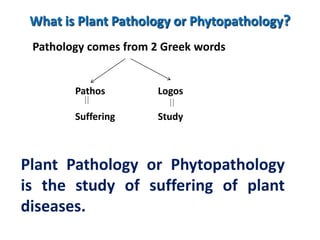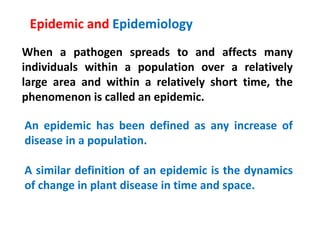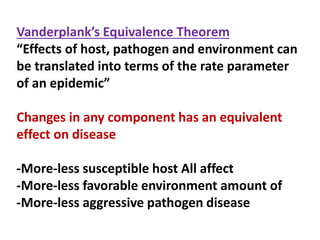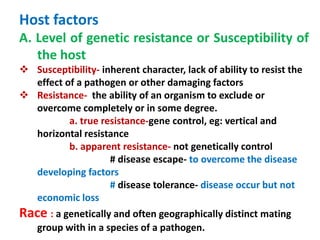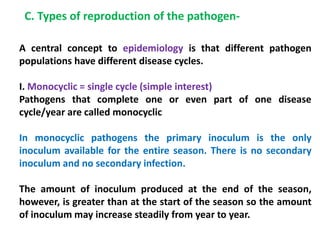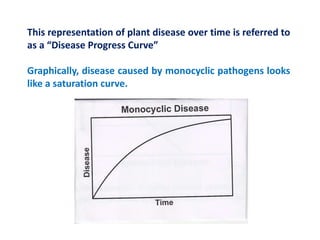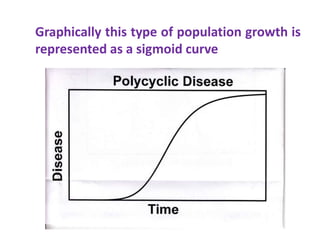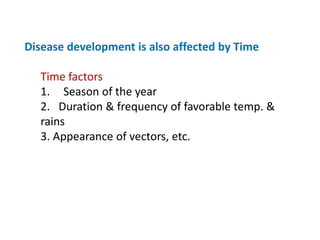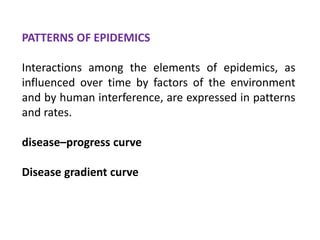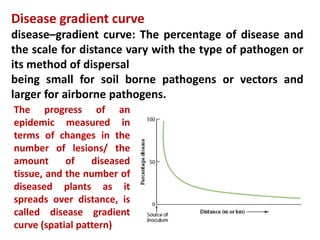Plant pathology, or phytopathology, is the study of plant diseases, focusing on their causes, interactions with pathogens, and development mechanisms to create management strategies. Diseases are classified as endemic, epidemic, pandemic, or sporadic, with epidemics being sudden outbreaks causing significant damage. Understanding disease cycles and the factors influencing epidemics is essential for effective disease management in agriculture.
